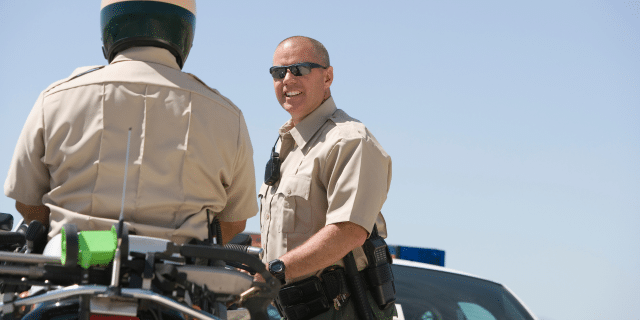When temperatures soar, staying cool isn’t just a comfort—it’s a matter of safety. For law enforcement officers and first responders, the summer heat adds another layer of challenge to already demanding duties. Whether directing traffic under the blazing sun or responding to emergencies in heavy gear, heat stress can sneak up fast. Here are some smart, practical strategies to help you keep your cool.
Suit Up for the Season
Your uniform is your armor, but under the summer sun, it can turn into a sauna. Choosing the right gear can make a huge difference in staying cool.
- Go Light and Breathable: If your department permits, opt for summer uniforms made from lightweight, moisture-wicking materials like mesh, rayon, cotton, or lightweight polyester. These fabrics help sweat evaporate quickly, keeping your body temperature in check.
- Add Cool Extras: Cooling vests, neck wraps, and other personal cooling gear can provide extra relief on scorching days—just make sure they’re approved by your department.
- Bike & Traffic Patrol Tips: Tactical shorts and ANSI-certified high-visibility polos keep you mobile, visible, and comfortable.
- Head-to-Toe Comfort: Swap out heavy hats for breathable, UV-protective caps—department approved of course. Choose moisture-wicking socks—many of which include anti-odor features—to keep your feet dry and blister-free.
Pro Tip: Wear your ballistic vest on the outside. In summer, it’s better to skip layering over it. Outer vest carriers offer protection and breathability—without sacrificing your uniformed look.
Hydrate for the Long Haul
When you’re in the sun for hours, even mild dehydration can take a toll. Drink early and often.
- Water Is #1: Drink before, during, and after your shift. Don’t wait until you’re thirsty.
- Try Coconut Water: It’s a great natural source of potassium and electrolytes.
- Skip These: Caffeinated drinks, sodas, energy drinks, and alcohol all dehydrate you. Caffeine constricts blood vessels and acts as a diuretic, while alcohol sets you up for a rough shift the next day.
Eat to Beat the Heat
It takes a lot of energy for our bodies to digest a steak dinner. When our body breaks down protein, it creates heat. Don’t let heavy meals weigh you down. Aim for lighter, heat-friendly meals and snacks leading up to and during your shift.
- Choose Hydrating Snacks: Watermelon, peaches, apricots, and radishes are great choices.
- Select Leafy Greens: They’re loaded with water and easy on your system.
- Enjoy Smart Fuel: Choose lean proteins and whole grains to keep energy up without overheating your body’s digestive system.
Don’t Forget Sunscreen, Bug Spray & Other Essentials
It’s not just the heat. Make sure you protect your skin from damaging rays and uncomfortable, itchy bites.
- Slather the Sunscreen: Apply broad-spectrum SPF 30+ generously and reapply every two hours, especially if you’re sweating.
- Bring the Bug Spray: This is essential if your beat includes grassy or wooded areas. Mosquito bites are more than just an annoyance.
- Take Towels in the Cruiser: Keep a stash of clean towels to wipe off sweat and help you cool down quickly. Try a cooling towel; it will absorb your sweat and create a cooling effect.
Know When to Rest
Recovery is just as important as readiness. Smart breaks can keep you from overheating and reduce the risk of heat-related illness.
- Take Breaks: When possible, rest in the shade or an air-conditioned vehicle. Short pauses throughout your shift can help regulate body temperature and maintain focus.
- Watch for Warning Signs: Learn to recognize early symptoms of heat stress—like dizziness, nausea, or confusion—and act quickly if they appear.
- Use the Buddy System: Keep an eye on your partner—and yourself—for signs of heat exhaustion.
- Have a Heat Emergency Plan: Know what to do if you or a colleague begins to show symptoms. This goes for K-9 partners, too!
Know the Warning Signs
Heat illness can escalate quickly—from cramps to exhaustion to life-threatening heat stroke. Be alert for these symptoms:
Signs of Heat Stroke:
- Body temperature above 103°F
- Dizziness or disorientation
- Nausea or vomiting
- Headache
- Hot, red, dry skin
- Rapid heartbeat
- Confusion
If you or a partner exhibit any of these, take immediate action:
- Get to a cool area
- Remove excess gear
- Apply cold compresses or ice packs to the forearms, neck, or groin
- Seek medical help immediately
As law enforcement officers and first responders, you face challenges every day—especially when the heat is on. That’s why we’re proud to protect the heroes who protect all of us. From custom insurance coverage to exceptional service tailored to law enforcement professionals, we’ve got your back—on duty and off.
This article is furnished by California Casualty, providing auto and home insurance to educators, law enforcement officers, firefighters, and nurses. Get a quote at 1.866.704.8614 or www.calcas.com.
- Simple Ways to Show Thanks This Season - November 17, 2025
- The Worst Place to Stash Your Valuables - November 14, 2025
- Are You Road Trip Ready? - November 11, 2025

